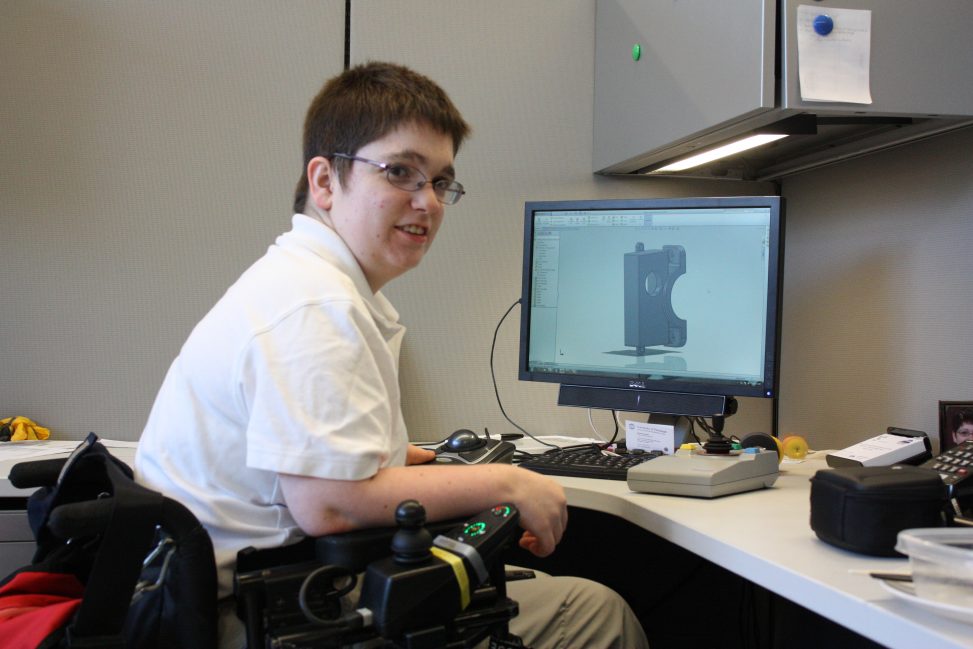Introduction:
In preparation for our group to start the final project, our team of Sruti Srinidhi, Jina Lee, and Connor McGaffin, interviewed our client, Elaine Houston, so that we are able to design an assistive device that caters towards her, a person with physical disabilities. Before meeting with Elaine, we sat down and debriefed on our intent, goals, learning objectives, and secondary research. Our team purposefully went through this process so that when we interviewed with our client, we would have a strong understanding of what we need to ask and know. From our research, we were able to enter the interview with a lot of background information about Elaine, making it easier for us to emphasize and have a comfortable conversation. Due to the current situation, we understand the constraints that we will face, but we plan to create a design that is as accurate as we can make through various mediums like a simulator version and digital renderings of our prototype.
Agenda
Before our interview, we prepared by making an interview script and doing research about Elaine Houston through her website and other online sources. Our team wanted to make sure that we were all on the same page with the project, so created our own overall brief. This was extremely helpful for all of us to get a better understanding of what we plan our outcome to be at the end of this project. In addition, getting started through this process was insightful and allowed us to thoroughly prepare for our interview! After doing research, we created “How Might We Questions” to develop a stronger understanding of what we would like to takeaway for the overall project.
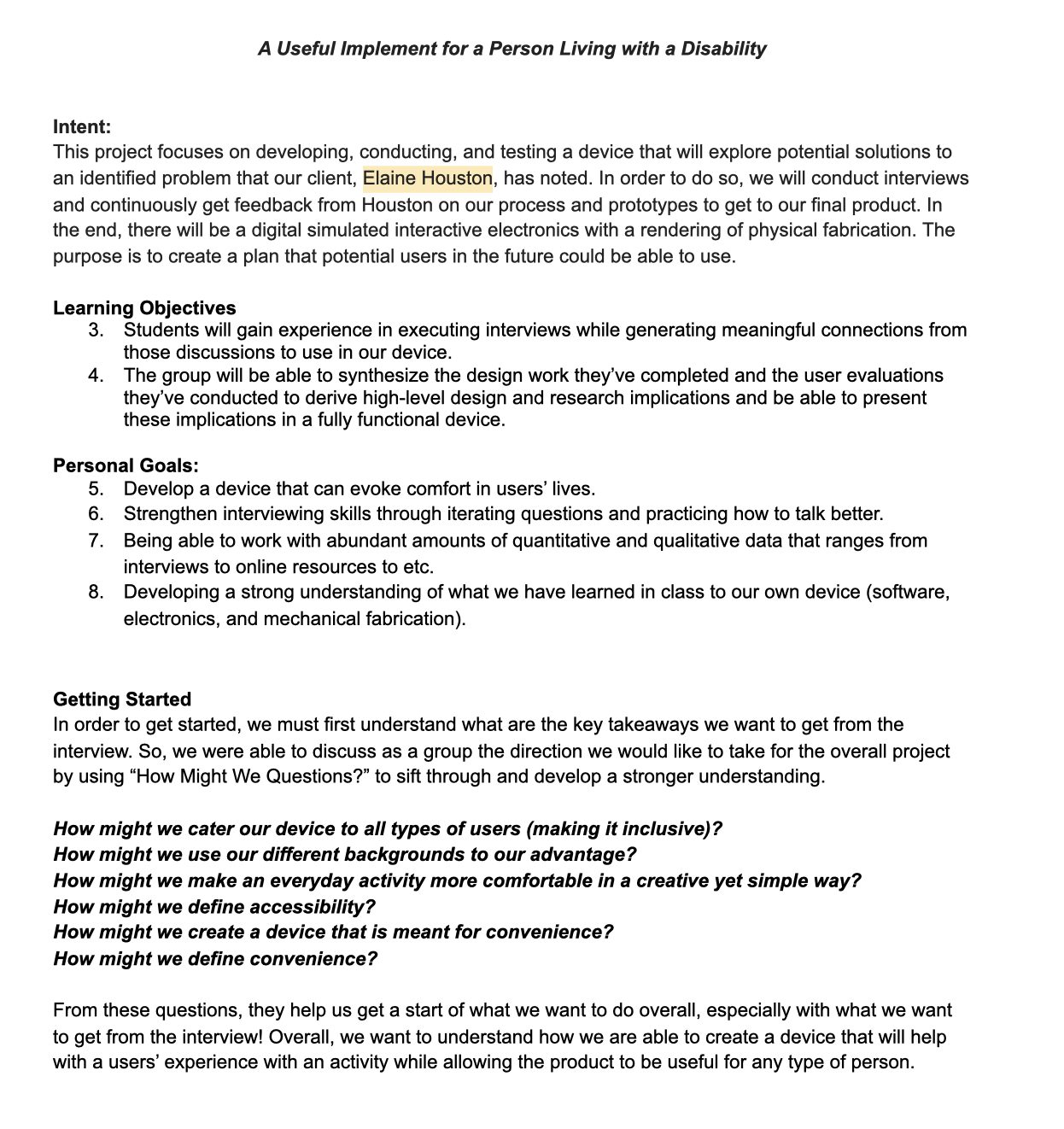
Here is the brief that our team created!
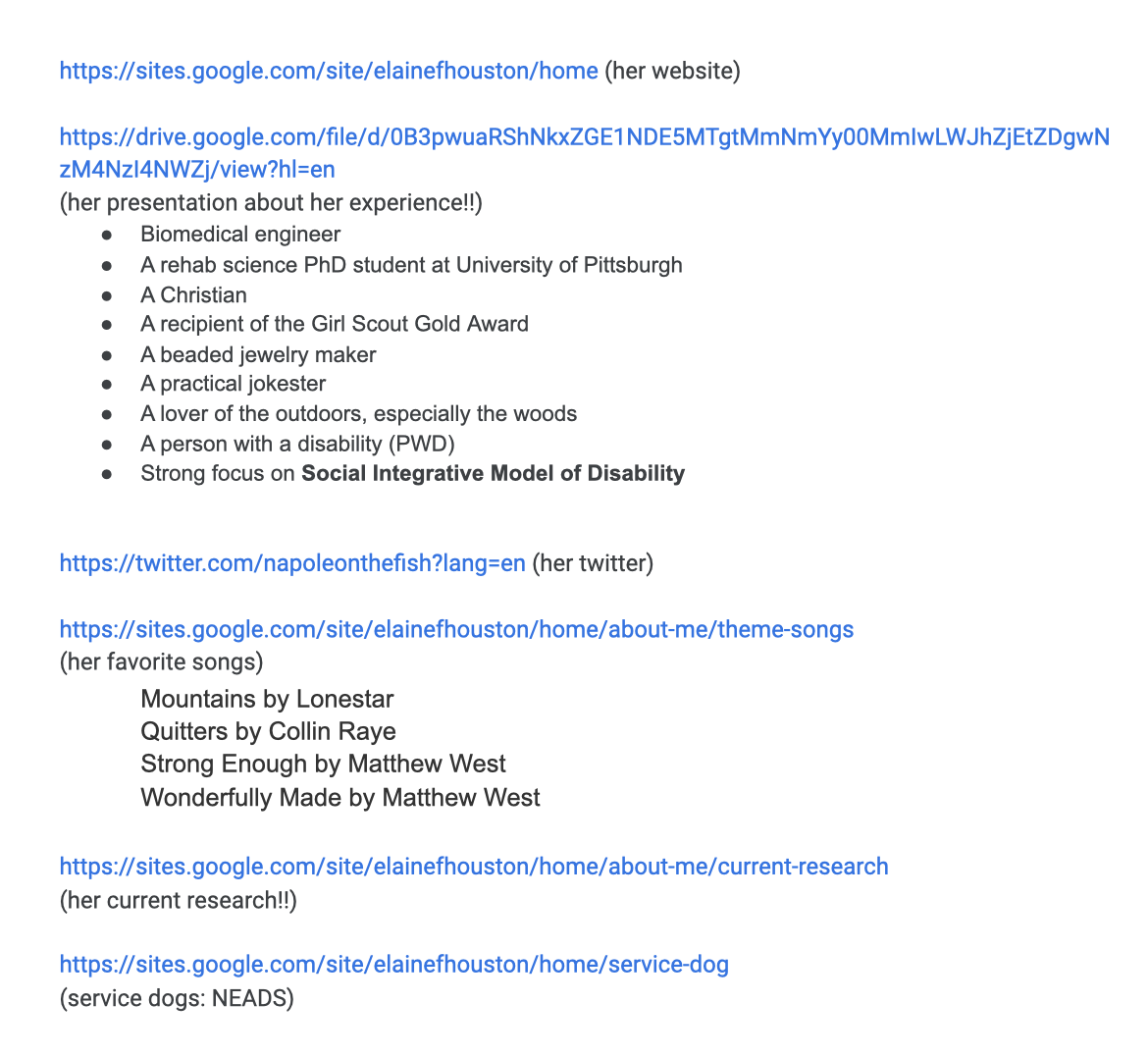
Here are the resources we used to learn more about Elaine!
From the preparation, we were able to start creating interview questions. Our overall goal from these questions was to help her identify problems in her daily life that she wants an intervention in. We initially wanted to record our session, but due to some reasons, we were unable to. Fortunately, we were able to have our whole team note-take and interview at the same time. We split our questions into three sections: Warm up/About, What Accessibility Means to Elaine, and Wrap up. We split up the questions this way so that we were able to get the best understanding about Elaine. We weren’t able to ask all the questions due to our interview running longer than expected, but we were glad we had this structure. In the future, we plan on following a stricter structure so that we can touch up and talk about all the topics to help our project.

Here is the interview script that we had planned.
After our interview, it was interesting to see how we all note-take slightly differently. Some only used the document to type up the notes, while others used handwriting to jot notes while also typing. Seeing this difference was nice to get to know each others’ work styles! Here is our link for those that would like to get a more in-depth view of our interview and process: link.
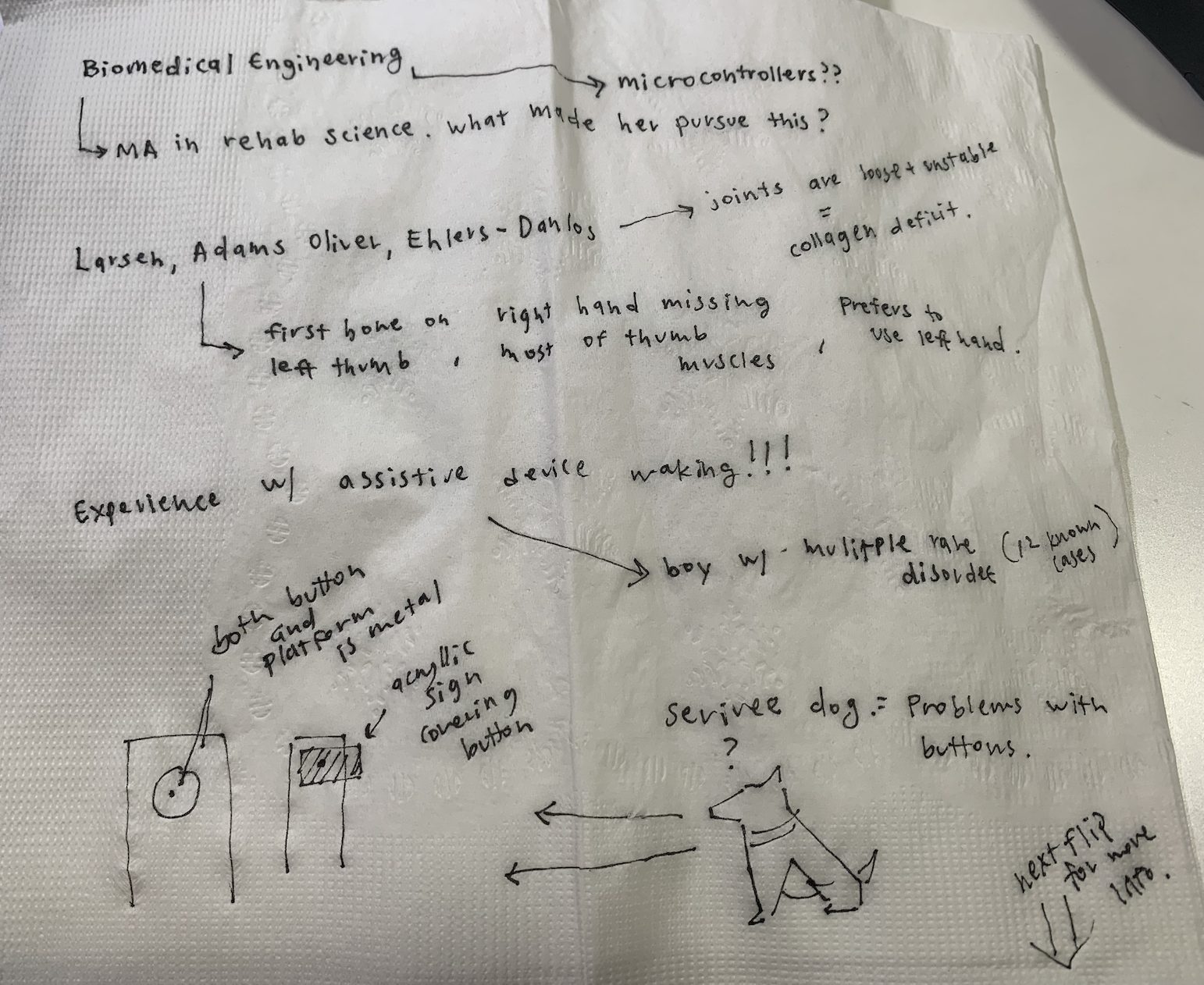
Here is a part of the napkin that one of the team members wrote on so that after the interview, they would be able to go back to the document and calmly reflect and add their notes.
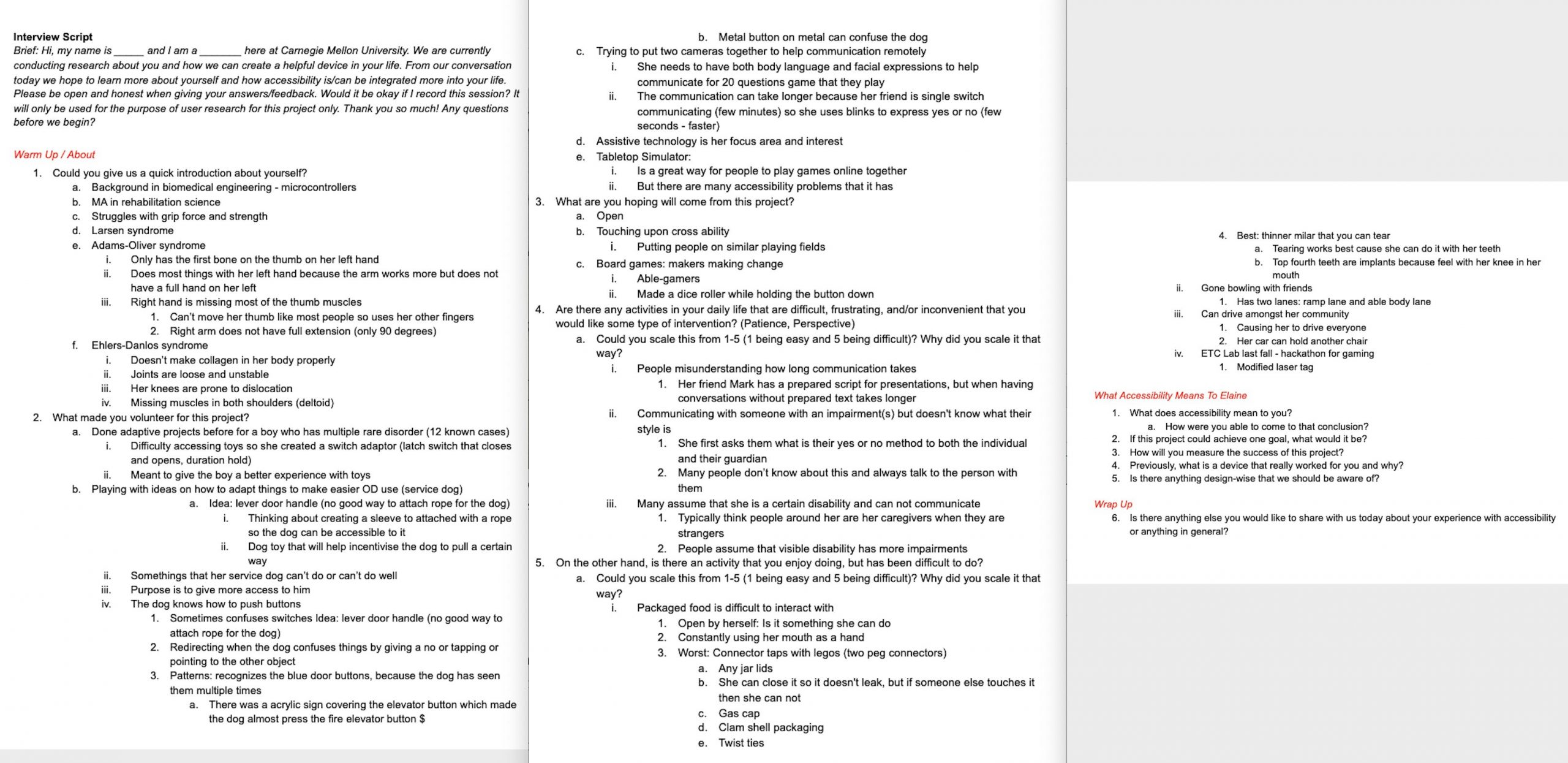
Here are all the notes combined on a google docs!
Summary and key takeaways
The interview was quite informative and eye opening to us. As a team, we were able to learn a lot about how tasks that seem so trivial to us, like rolling a dice, can be a challenge to others.
Most of the interview was consumed by Elaine talking about the different projects she has worked on and how these devices help her in her daily life. This really helped us understand her lifestyle, interests, and her problems. She talked about how her service dog who has a RFID reader and can identify and press different buttons for her, like in an elevator. Adding to that, she mentioned that her service dog often gets confused when there is a label on a button. This concern was extremely interesting in the sense that the confusion came from human-made choices i.e someone putting a sign covering the button or the button and the platform it is on are both metal. These examples were things that we all thought were surprising and unexpected, because of the irony that it was another human that caused the problem, when we typically expect that we are supposed to help and not make more difficulties. She also talked about how she struggled to play laser tag with the regular devices and so built herself a switch that she could easily use to play the game. With that device, to make it more fair, able-body users would have constraints to “make the playfield more fair.” This type of thinking was very new to the whole team, but very eye-opening and helpful.
After a long conversation about her different experiences, Elaine began explaining the problems she faces on a daily basis. She started off by talking about how she struggles to open clamshell packaging. She emphasized that she constantly has to use her mouth to open packaging but even that sometimes gets very challenging. Some of her friends come to her house and meal prep, and in the process, they close her jars too tight, which she then struggles to open. Furthermore, she talked about how she finds it challenging to roll a dice and play games and would love for there to be a device that could simulate the roll of a dice with just one button. She then continued to emphasize the idea of cross ability, which is essentially bridging the gaps between people’s abilities and placing them on similar playing fields, which was quite interesting and something we are definitely looking into.
Reflection
Overall, the meeting did not follow the plan we had in mind. Initially, we wanted to follow a more structured framework, hence our preperation, but as we started the interview, it started to become more conversational. The interview lasted much longer than we expected. It was less than an hour and a half. Due to Elaine’s extensive experience with engineering, it was much harder to extract what she found difficult, because she had or was in the process of solving those problems herself. It seemed that the majority of the meeting involved Elaine talking about the different devices she has built and how she went about doing that. It was great to listen to as she is very knowledgeable and we learned a lot from it. However, it was not particularly helpful in giving us the insight required to build an assistive device for her. In addition, it was quite difficult to steer her in the direction we wanted as she passionately spoke about the work she has done for long periods of time, making it difficult for us to steer her back to the original questions. Eventually, she did come around to talking about the problems she faced but the solutions to her problems were more mechanical than those that required the arduino. Or they were solutions that did not require electronic devices at all. Many of the problems she suggested seemed to be out of our control and/or were too broad and complex for us beginners. It was extremely interesting for her to educate us about creating devices that help cross able-body and non-able body users. This type of thinking was very new to all of us and was a big interest, however, due to our lack of experience it is an extremely difficult and complex concept for us to work on. After the interview, as a team, we were able to discuss and analyze the data we collected from our interview. However, the results that we got weren’t exactly what we had hoped for. In the end, since the whole team had the same takeaways from the interview, we were unable to come up with a good enough device idea to build for the project. Looking back to our secondary research, we were able to go through Elaine’s website where she talks about her interest in music. We then decided to take this route and proposed the idea of a button based musical instrument for her. Because we want our product to cater towards Elaine, we sent her our proposal for the musical device and are still waiting for a response. We want to create a device that not only helps us exemplify the skills we learned from the class, but also be something that Elaine is interested in. Our main goal for this project is to develop a device that Elaine would want to use, so her feedback is extremely crucial to our next steps.
